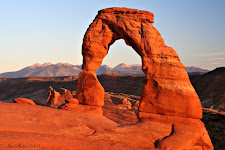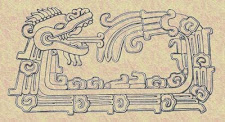One afternoon in the summer of 2005 I stood on the narrow, sandy ridge that runs north for a quarter mile from the back of the 13th green at Pacific Dunes to Whiskey Run Rd. Fifty feet below me an Arctic swell pounded the driftwood-strewn beach and golf holes traced the edge of the bluff for over two miles to the south without a single building in sight. I was standing on what would eventually become the small oceanfront portion of the fourth course at Bandon Dunes Golf Resort and from this vantage point it was easy to see why people travel from all over the country and the world to play golf in this remote corner of Oregon.
But when I turned away from the sea and looked eastward to where the majority of the new site is located in a flat valley behind Pacific Dunes, I couldn’t help thinking that for all the prestige and honor of being chosen to design and build the fourth course – and a who’s who of top candidates were lined up to do it – it was also kind of a thankless job. No matter how enjoyable or challenging the new course turns out to be, the bulk of it will be relegated to the inland side of Tom Doak’s cliff top masterpiece – kind of like sitting behind the Queen at the theater when she’s wearing a giant hat.
Three years later on a brisk, sunny December afternoon I find myself standing in the same spot, only now the top of the dune has been chopped off and transformed into the seventh green of Bandon’s new Old Macdonald course and the entirety of the valley floor is covered with a patchwork of interwoven golf holes. This time I played my way out here with my old boss, Caddiemaster Ken Brooke (I caddied at Bandon for three summers), thanks to the resort’s policy of allowing “preview” rounds on their new courses. Eight holes are open for play at this writing with the remainder scheduled to open by fall. I certainly look forward to coming back to play the course in its entirety, but also enjoy watching the unfinished holes take shape around me. It feels like sneaking a peak at the wizard pulling the levers behind the curtain.
Any concerns I had about Tom Doak’s long shadow having a negative impact on the new course have been put to rest. Owner Mike Keiser, who’s guided the evolution of the resort with one seemingly clairvoyant decision after another, solved the problem in a simple and ingenious way: he hired Doak to design it. And while Doak is rightfully proud of Pacific Dunes and certainly the greatest beneficiary of its success, even he admits it can be an obstacle when approaching new projects. “Some clients push us too hard to build something with the same style as Pacific Dunes because it’s been so successful. In this case it’s been nice to have a client who didn’t push in that direction because he already owns Pacific Dunes.”
Well traveled golfers and architecture enthusiasts will immediately recognize the elements of these designs: Redan’s right to left, front to back tilting green, Road’s center green front bunker, Biarritz’ green splitting chasm, etc. And it’s a fitting tribute because Doak, like many other architects, has been incorporating these elements into his designs for years anyway, regardless of whether they were inspired by Macdonald or the originals. Aesthetically though Doak’s style is very different from Macdonald’s. Doak is known for his rumpled, rolling fairways and rough edged bunkers, for his topsy-turvy putting surfaces that are often
 indistinguishable from the surrounding collection areas - in short, a “natural” links look that is anything but natural. One of Doak’s shapers described his work as the “artistry that hides the art” or, more specifically, the backhoeing that hides that hides the backhoe. And indeed, as I’m putting on the fourteenth green a
indistinguishable from the surrounding collection areas - in short, a “natural” links look that is anything but natural. One of Doak’s shapers described his work as the “artistry that hides the art” or, more specifically, the backhoeing that hides that hides the backhoe. And indeed, as I’m putting on the fourteenth green a bulldozer is pushing sandy soil into a giant pile that will become the namesake hill on the adjacent “Alps” hole. When finished, it will undoubtedly be indistinguishable from the nartural dunes surrounding the course.
The fact that Macdonald’s “shaping” is much smoother and more pronounced than Doak’s may be due to the fact that Macdonald was building courses in the nineteen tens and twenties literally by horse and plow. He didn’t have the luxury of swiveling shovel buckets and piston powered arms that can pound faster than an army of disinterested donkeys and give a course that windblown or eroded look. But it is likely that Macdonald would’ve created similar bold lines and battlement like contours even with the luxury of modern machinery because he was a Scottish American who attended St. Andrew’s University and was inspired above all by the course he played most: the Old Course. This influence is evident in his large, square, terraced greens and sheer walled bunkers.
What I originally perceived to be a limitation of the Old Macdonald site – the fact that it’s mostly flat, open and landlocked – turned out to be a strength because it gave Doak a template to work with that’s not only very different from the turbulent topography of Pacific Dunes, but remarkably similar to the Old Course (most of which is located on the inland side of the New and Jubilee courses and also coincidentally has exactly two greens and two tees on the water.) Doak built on this theme by recreating Macdonald favorites “Road” and “Eden” as well as the par five fourteenth “Long” with its famous Hell Bunker – a feature that Macdonald himself never copied. In doing so Doak has taken the concept of the tribute course one step further paying homage to the man by mining the source material that inspired him – kind of like a painter paying his respects to Monet by visiting Giverny and painting the actual water lilies anew as opposed to simply copying them from the artist’s canvas.
Still direct Macdonald references abound, particularly to the National Golf Links of America – the closest to a pure links of any of Macdonald design, therefore closest to Doak’s own style and the most adaptable to this site. For example Doak chose to model his “Alps” hole after National’s long par four 3rd rather than the original par four seventeenth at Prestwick. The most obvious difference between these two is length and the position of the hill. The seventeenth at Prestwick is just under 400 yards and the hill runs across the entire width of the landing area forcing a blind approach with a mid to short iron. National’s Alps plays more like a par five allowing the player to gamble with a long, blind shot to the green, but also providing a bail out to the right to set up a short, visible third. Tributes aside, it’s not surprising that Doak is a fan of National’s “Alps” because it’s one of the finest examples of how to challenge good players while still being fair to high handicappers – one of Doak’s guiding principles.
Given how much fun it is attempting to identify the signature features and influences behind the individual holes, it’s easy to overlook the remarkable job Doak’s done stringing them all together. Routing is never easy, but this project presented a unique challenge because Doak “was taking specific ideas for golf holes and trying to see where they fit onto the site.” In other words, he didn’t have the luxury of going with the flow of the land and taking what it gave him. He needed specific things from it. And when those things appeared on opposites sides of the property, he had to figure out how to relevantly fill the spaces in between. There was also the additional constraint of trying to make the best use of the limited oceanfront. He successfully routed both nines out to the bluff and back, but counter intuitively decided to build only the fifteenth green up on top of the dune overlooking the sea. He originally planned to place number seven beneath it on the inland side. It’s hard to imagine any other architect foregoing the obvious wow factor of a panoramic view, but Doak’s focus was on finding the best possible green sites for Macdonald holes and the narrow crest of this part of the dune didn’t initially seem to be one of them.
Mike Keiser eventually persuaded Doak to move the seventh green up to the top of the dune using the excuse that it would provide better access to the spectacular cliff top halfway house. In an ironic twist of fate, Doak’s acquiescence resulted in an architectural boon. In trying to figure out how to play back down to the valley from the top of the dune he discovered the one critical green site that had eluded him – the Chasm hole. The resulting downhill par three plays between 185 and 225 yards from a lofty, exposed tee box with the sea at its back, down to a massive 21, 000 square foot green bisected by a 4ft deep swale (think Yale’s #9 or Mid Ocean #13.) It is arguably the most memorable hole on the course. I guess you really can have your hotdog and eat it too.
There’s bound to be disagreement as to how Old Macdonald stacks up to the other courses at Bandon. After all, not everyone can agree on which is the best of the first three anyway. But I think the unique nature of this project has resulted in something very special. Doak is hesitant to call his work here a “synthesis,” preferring to describe it simply as “the adaptation of Macdonald holes to links conditions.” But it’s truly remarkable how much these two architect’s styles compliment each other. Macdonald’s bold features and obvious strategies add a touch of clarity and bravado to Doak’s inherent reserve. And Doak’s rough edges and fractured lines add a little aesthetic sophistication and nuance to Macdonald’s sheer brawn.
Doak downplayed the possibility of this project having a lasting influence on his work, but it’s hard to imagine such a rare and challenging project not having a lasting effect. And remember, this is the same Tom Doak who also recently collaborated with Nicklaus at Sebonack, so he’s definitely not afraid to push his boundaries. I guess only time will tell. We’ll just have to wait to see if it’s possible for an old Doak to learn new tricks.























.jpg)





No comments:
Post a Comment